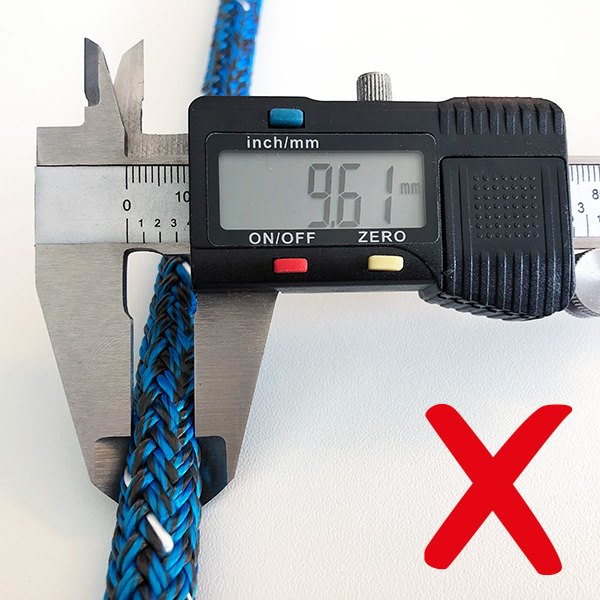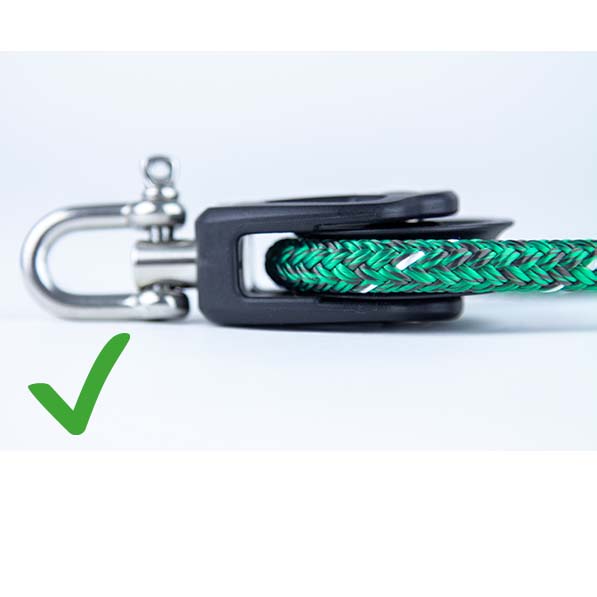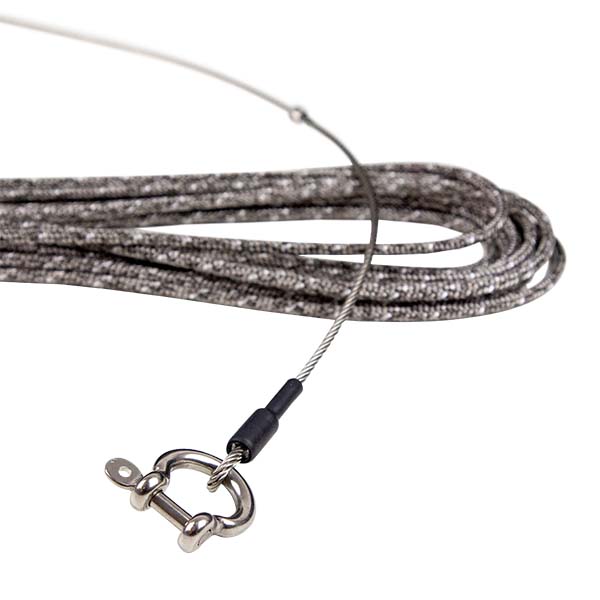blog

Why is the core of my Dyneema rope free from the cover?
One of the most popular ways to make a neat finish at the end of a rope is melting. This is a good solution for polyester ropes because core and cover are of the same material. However, it is not the best way for ropes with a super fibre core. The different materials of the core and cover will not melt together properly and you will see the core is separated from the cover. Read blog
Whipping of Ropes
High quality finishing of rope ends with a (stitched) whipping
What is the best way to secure the end of a line and prevent it from fraying or breaking? We briefly present options for attaching the end of the rope with their advantages and disadvantages Read blog
What is the best shackle for my halyard and sheet?
We often get questions which shackle to choose because there is a big variety of shapes, sizes and materials. And for every type of halyard or sheet there is another type of shackle. This makes it off course difficult to choose. In this blog we help you to decide, which is the best shackle. Read blog
Which diameter are my ropes?
Ropes come in many different diameters and there are guidelines to help you choose the right diameter for your purpose. But how do you know which diameter the halyards and sheets on your boat are? How do you measure the diameter? Read blog
What is the difference between Dyneema® and Polyester ropes?
Dyneema® and polyester are the two most commonly used materials in sailing ropes. The type of rope is chosen between these materials. Sometimes Dyneema® and polyester yarns are also used in a combination. Read blog
Why won’t my sheet ease properly?
If your mainsheet does not ease well and the rope has a lot of friction, it is difficult to sail. This is particularly noticeable when there is not a lot of wind. This friction can have multiple causes. One of the reasons could be that there is a lot of resistance on the bearings. Read blog
Wire-to-rope halyards?
At Premiumropes we do not only work with modern ropes and rigging of all sorts, but also have big splicing capacities. Therefore, we are your first stop to have such a halyard made from rope and wire according to your specification. Read blog
How do I recognise the material of my sheets and halyards?
There are many different types of ropes in sailing. And it is not always easy to recognize what kind of ropes there are on a boat. Certainly not if the ropes have been used for a while. But how do you know what material a rope is made of? Read blog
What is the right rig tension for my boat?
Tuning your mast with the correct shroud tension is an important part of your boat trim because of the use of mast bend to control the sail shapes under different wind conditions. Read blog
How do I choose the right block or pulley?
There are many different blocks and pulleys out there, but how do you know which is the right one? There are so many options that it’s hard to make the right choice. Read blog
Spinlock clutches and jammers - How to select the right one?
It's not very easy to select the right clutch for your boat. A racer will always have a higher demand on his clutch then your average cruiser. Keep these points in mind when you select your Spinlock clutch. Read blog
The Essential Guide to Dyneema® Loops for Sailing
When it comes to high-performance rope solutions, Dyneema® loops are a sailor’s best friend. With unparalleled strength, lightweight properties, and ease of use, these loops have become essential in modern rigging and sailing. Read blog













